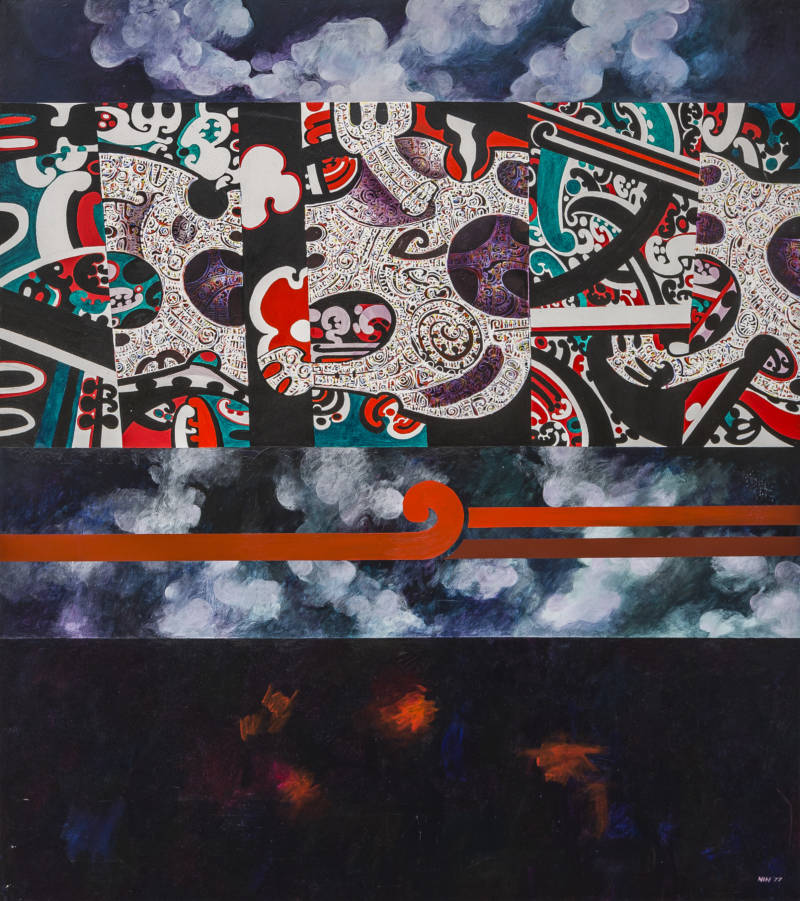Buck Nin was born in Te Tai Tokerau Northland. His father, Choung Nin, born in Guangzhou (Canton), China, married Pare Hikanga Tatana, of Ngāti Raukawa and Ngāti Toa Rangatira descent. At Northland College, Kaikohe, he was taught by Selwyn Wilson and Kāterina Mataira, both pioneers in their field. He moved to Tāmaki Makaurau, enrolling at the University of Auckland’s Elam School of Fine Arts. There, he came into contact with Robert Ellis, whose work impressed him. He also forged ties with artists and writers such as Selwyn Muru, Darcy Nicholas, and Hone Tūwhare.
Nin finished his academic training at the University of Canterbury’s Ilam School of Fine Arts, where his teachers included Rudolf Gopas. He gained a Diploma of Fine Arts in 1966. That same year, he initiated New Zealand Māori Culture and the Contemporary Scene at Canterbury Museum. One of the earliest exhibitions of contemporary Māori art, it toured to Te Whanganui-a-Tara, Australia, Western Sāmoa, Singapore, Malaysia, Hong Kong, and Japan.
Nin taught for 30 years, first at Bay of Islands College, Kawakawa, and later at the Church College of New Zealand, Kirikiriroa Hamilton. Among his students was Kura Te Waru-Rewiri. In the 1970s, he went with his family to Hawaiʻi and then to the University of Texas, where he completed doctoral studies. On his return, he and Rongo Wetere established Te Wānanga o Aotearoa, an independent art education training project.
In his paintings, Nin incorporated motifs drawn from whakairo, raranga, and kōwhaiwhai. His best-known works incorporate lace-like structures hovering in the landscape, evoking a spiritual presence in the environment. Andrew Clifford has commented: ‘Nin was part of a first generation of Māori artists who moved to the city and forged a bridge between the traditions of Māori art they had grown up with, and a new means of expression that engaged the technologies and issues of the day.’




